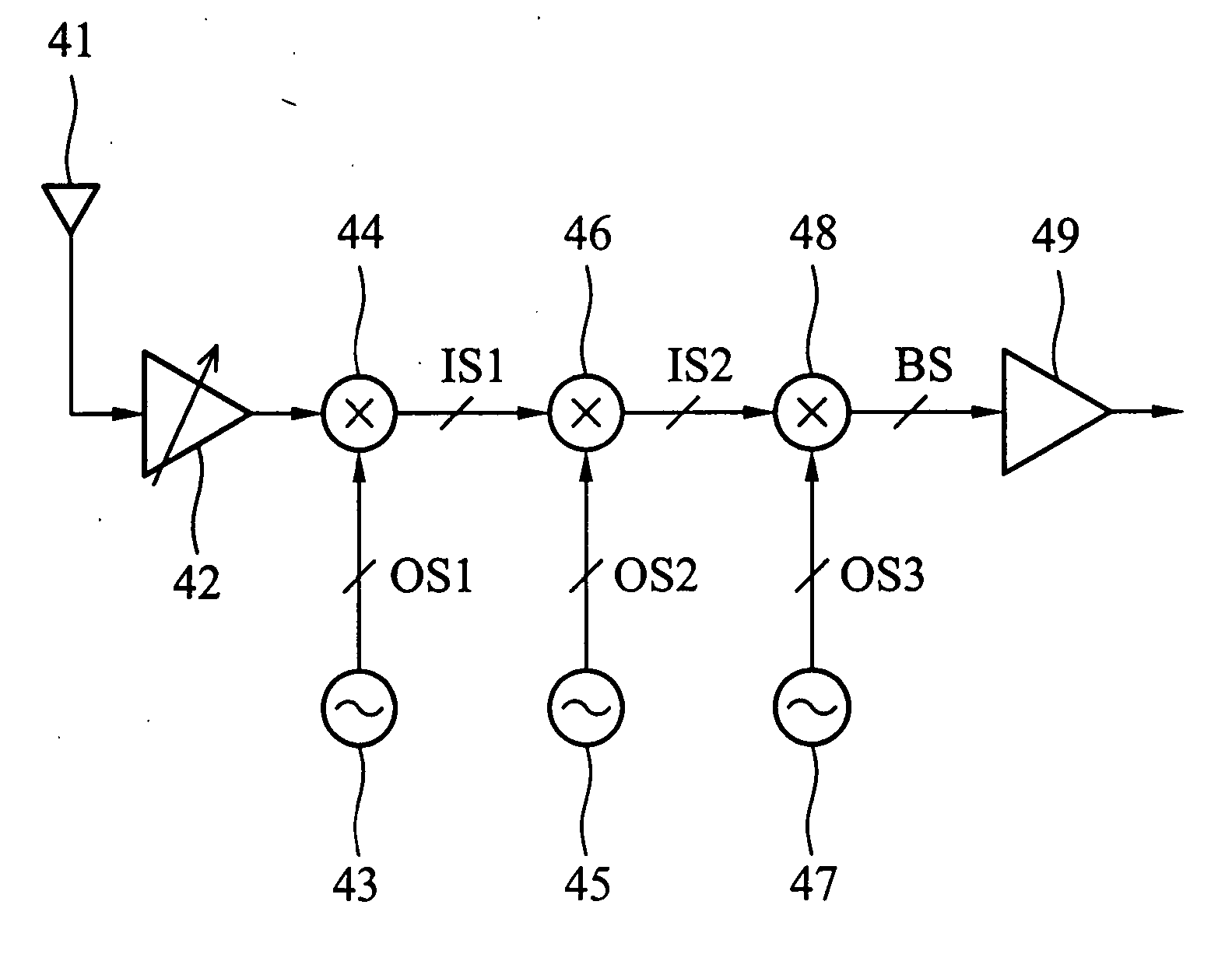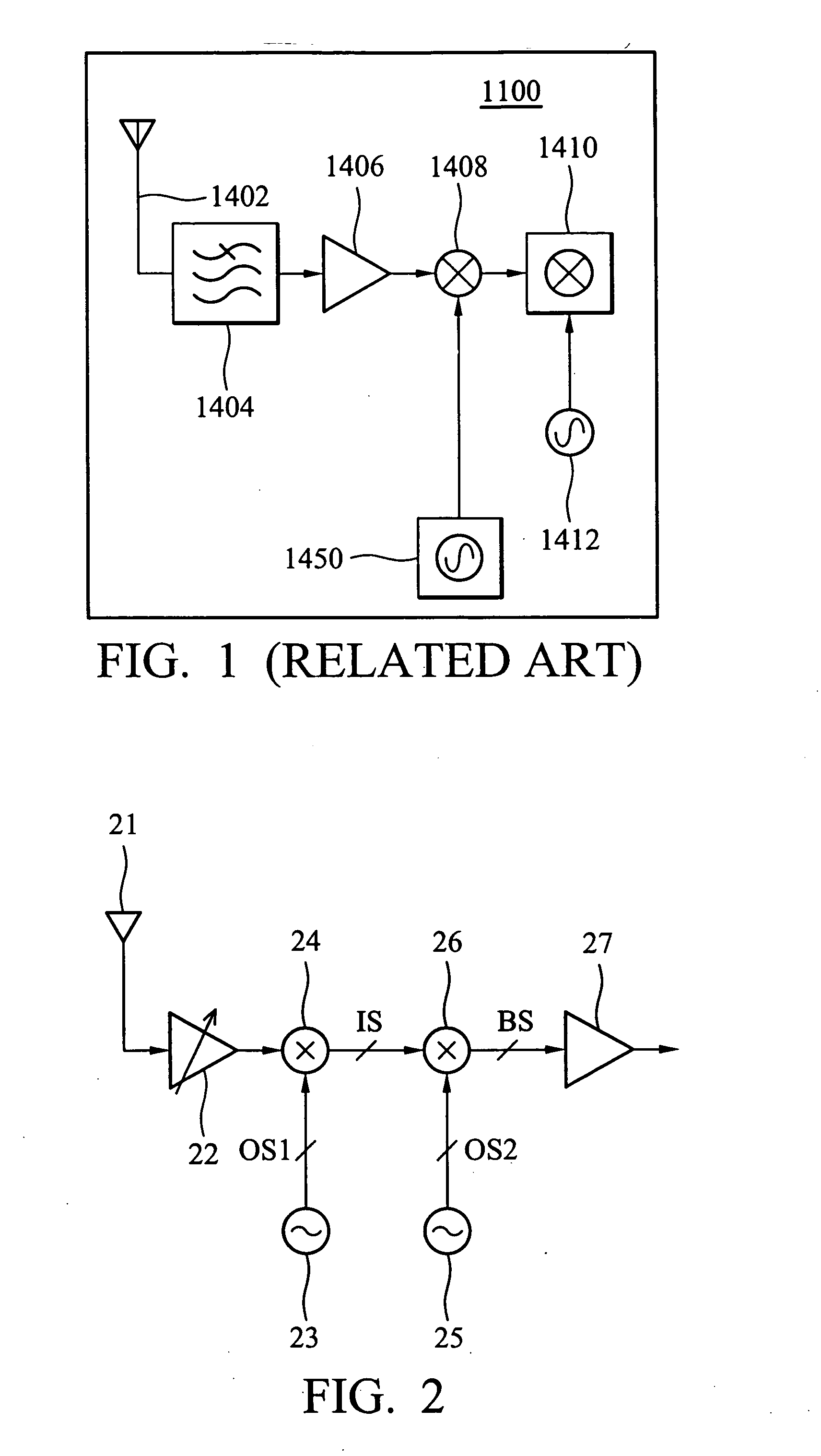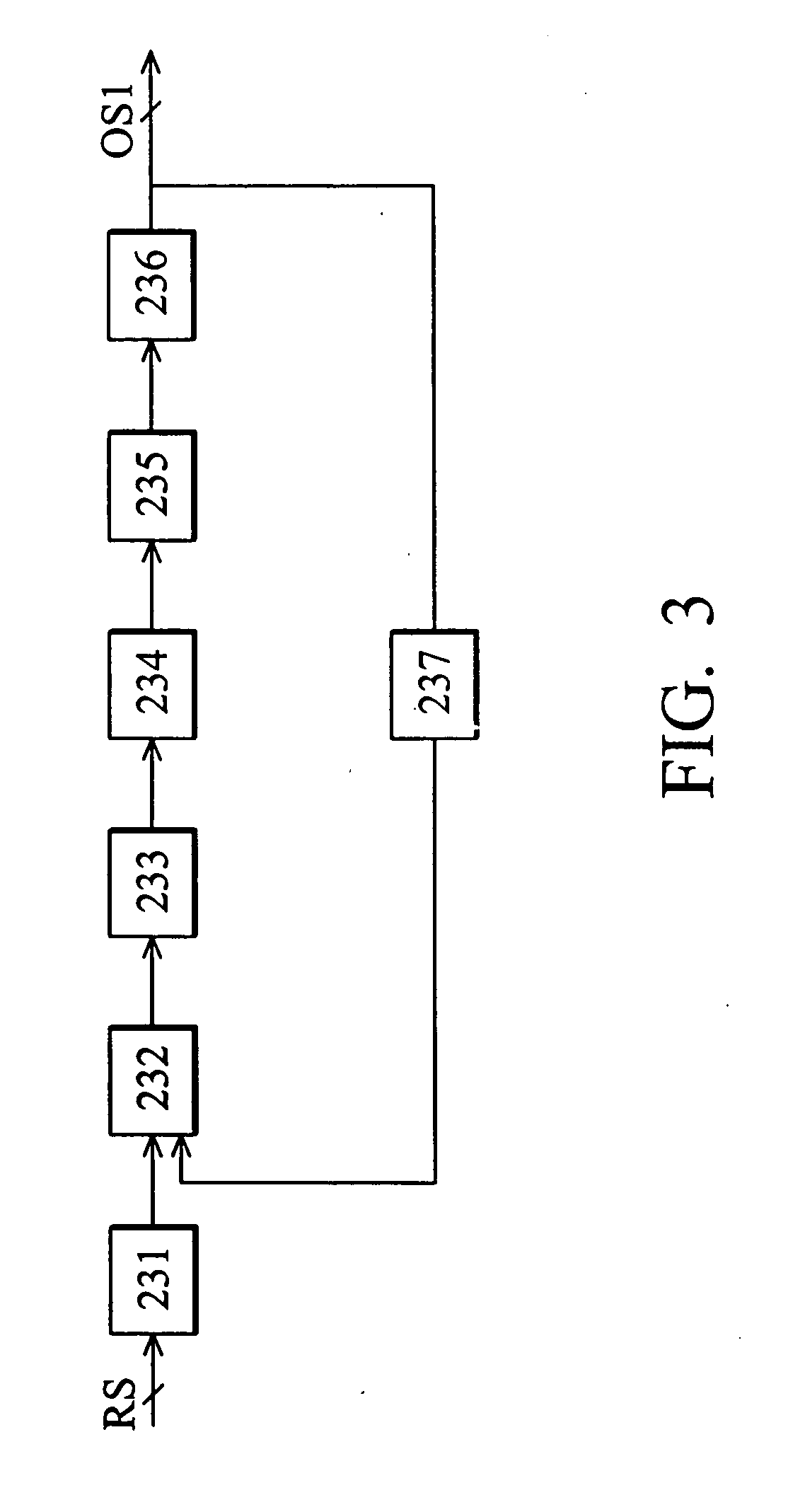Frequency conversion in a receiver
a receiver and frequency technology, applied in the field of frequency conversion, can solve the problems of large power consumption, low signal-to-noise ratio, and low distortion of the first mixer, and achieve the effects of fewer elements, low power consumption, and high signal-to-noise ratio
- Summary
- Abstract
- Description
- Claims
- Application Information
AI Technical Summary
Benefits of technology
Problems solved by technology
Method used
Image
Examples
Embodiment Construction
[0021]FIG. 2 is a diagram showing a TV tuner according to one embodiment of the invention. The TV tuner (receiver) includes an antenna 21 receiving an RF signal carrying information in all TV channels, a low noise amplifier 22 coupled to the antenna 21 to amplify the RF signal, a first local oscillator 23 generating a first oscillating signal OS1 having a first frequency FO1, a first mixer 24 mixing the amplified RF signal with the first oscillating signal OS1 to generate an intermediate signal IS, a second local oscillator 25 generating a second oscillating signal OS2 having a second frequency FO2, a second mixer 26 mixing the intermediate signal IS with the second oscillating signal OS2 to generate a baseband signal BS, and a SAW driver 27 coupled to an output of the second mixer 26 to drive an external SAW filter (not shown).
[0022] The first local oscillator 23 and mixer 24 form a first frequency conversion stage converting the RF signal from the radio frequency to a variable in...
PUM
 Login to View More
Login to View More Abstract
Description
Claims
Application Information
 Login to View More
Login to View More - R&D
- Intellectual Property
- Life Sciences
- Materials
- Tech Scout
- Unparalleled Data Quality
- Higher Quality Content
- 60% Fewer Hallucinations
Browse by: Latest US Patents, China's latest patents, Technical Efficacy Thesaurus, Application Domain, Technology Topic, Popular Technical Reports.
© 2025 PatSnap. All rights reserved.Legal|Privacy policy|Modern Slavery Act Transparency Statement|Sitemap|About US| Contact US: help@patsnap.com



